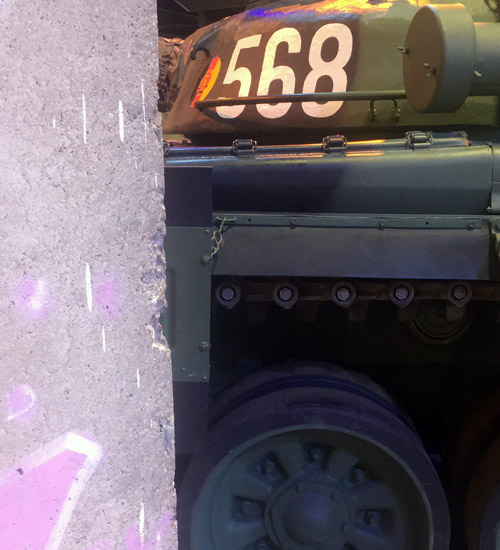2025 American Heritage Museum / Collings Foundation Annual Magazine
issuu.com
Welcome to Issuu’s blog: home to product news, tips, resources, interviews (and more) related to content marketing and publishing.Cold War
Berlin Wall Segment – GER/RUS | ARTIFACT
Cold War
During World War II, the United States and the Soviet Union fought together as allies against the Axis powers. However, the relationship between the two nations was always a tense one. Americans had long been wary of Soviet communism and concerned about Russian leader Joseph Stalin’s tyrannical rule of his own country. For their part, the Soviets resented the Americans’ decades-long refusal to treat the USSR as a legitimate part of the international community as well as their delayed entry into World War II, which resulted in the deaths of tens of millions of Russians. After the war ended, these grievances ripened into an overwhelming sense of mutual distrust and enmity.
Postwar Soviet expansionism in Eastern Europe fueled many Americans’ fears of a Russian plan to control the world. Meanwhile, the USSR came to resent what they perceived as American officials’ bellicose rhetoric, arms buildup, and interventionist approach to international relations. In such a hostile atmosphere, no single party was entirely to blame for the Cold War.
The United States created the NATO military alliance in 1949 in the apprehension of a Soviet attack and termed their global policy against Soviet influence containment. The Soviet Union formed the Warsaw Pact in 1955 in response to NATO. Major crises of this phase included the 1948–49 Berlin Blockade, the 1927–50 Chinese Civil War, the 1950–53 Korean War, the 1956 Suez Crisis, the Berlin Crisis of 1961 and the 1962 Cuban Missile Crisis. The USSR and the US competed for influence in Latin America, the Middle East, and the decolonizing states of Africa and Asia.
The 1970s saw an easing of Cold War tensions as evinced in the Strategic Arms Limitation Talks that led to the agreements of 1972 and 1979, respectively, in which the two superpowers set limits on their anti-ballistic missiles and on their strategic missiles capable of carrying nuclear weapons. That was followed by a period of renewed Cold War tensions in the early 1980s as the two superpowers continued their massive arms buildup and competed for influence in the Third World.
The Cold War began to break down in the late 1980s during the administration of Soviet leader Mikhail S. Gorbachev. Gorbachev’s internal reforms had weakened his own Communist Party and allowed power to shift to Russia and the other constituent republics of the Soviet Union. In late 1991 the Soviet Union collapsed, and 15 newly independent nations were born including a Russia with a democratically elected, anticommunist leader.




